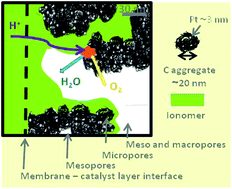Hydrocarbonproton conducting polymers for fuelcellcatalyst layers
Abstract

* Corresponding authors
a
Institute for Fuel Cell Innovation, National Research Council Canada, Vancouver, British Columbia, Canada
E-mail:
zhiqing.shi@nrc-cnrc.gc.ca
Fax: +1 6042213001
Tel: +1 6042213078
b
Department of Chemistry, Simon Fraser University, Burnaby, British Columbia, Canada
E-mail:
holdcrof@sfu.ca
Fax: +1 7787823765
Tel: +1 7787824221

 Please wait while we load your content...
Something went wrong. Try again?
Please wait while we load your content...
Something went wrong. Try again?
J. Peron, Z. Shi and S. Holdcroft, Energy Environ. Sci., 2011, 4, 1575 DOI: 10.1039/C0EE00638F
To request permission to reproduce material from this article, please go to the Copyright Clearance Center request page.
If you are an author contributing to an RSC publication, you do not need to request permission provided correct acknowledgement is given.
If you are the author of this article, you do not need to request permission to reproduce figures and diagrams provided correct acknowledgement is given. If you want to reproduce the whole article in a third-party publication (excluding your thesis/dissertation for which permission is not required) please go to the Copyright Clearance Center request page.
Read more about how to correctly acknowledge RSC content.
 Fetching data from CrossRef.
Fetching data from CrossRef.
This may take some time to load.
Loading related content
